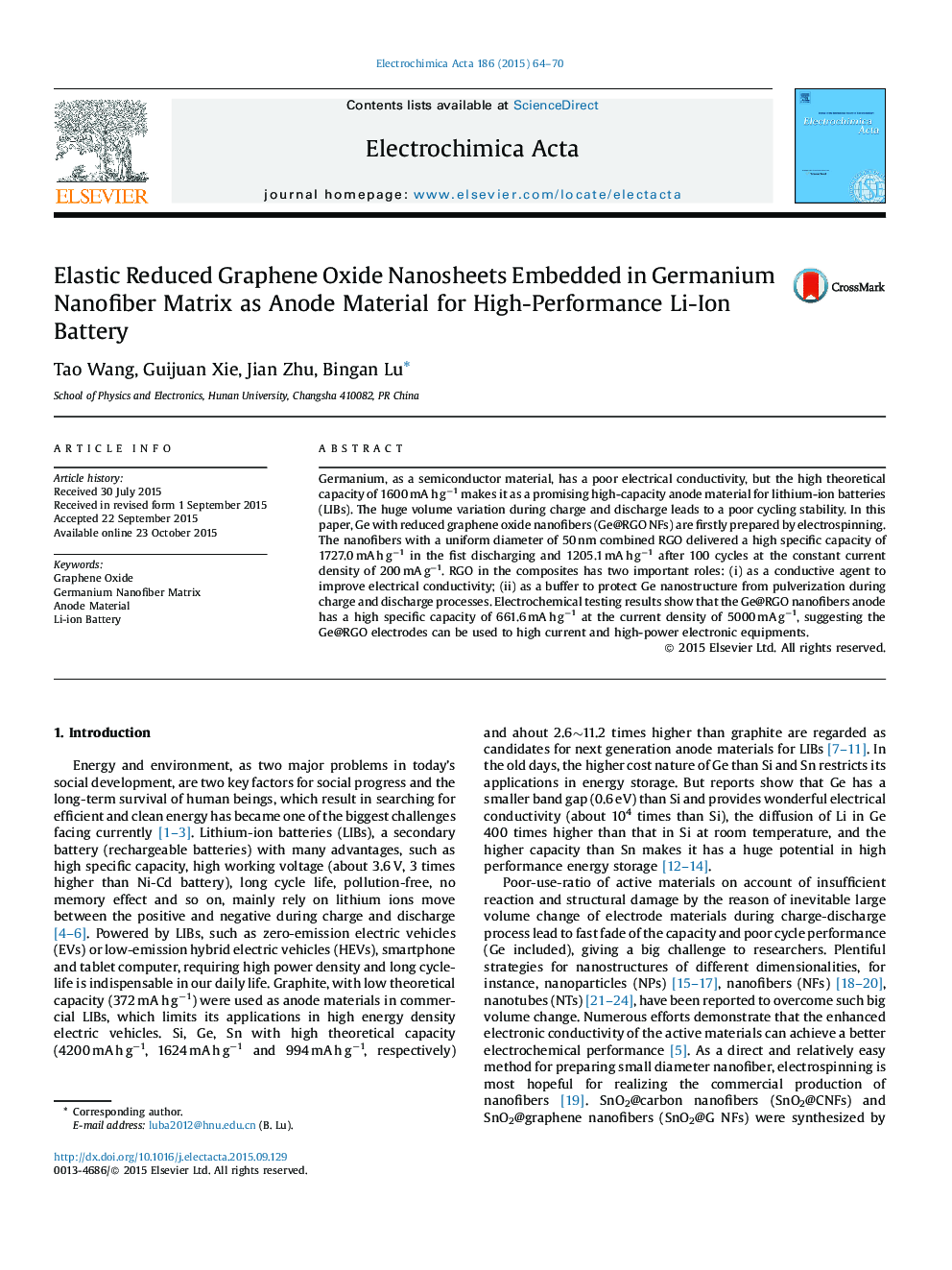| Article ID | Journal | Published Year | Pages | File Type |
|---|---|---|---|---|
| 183541 | Electrochimica Acta | 2015 | 7 Pages |
•We have successfully fabricated the novel Ge@RGO NFs by a simple and controllable strategy.•The present synthetic strategy is controllable and can be further extended to prepare various nanocomposites between RGO and anode materials.•The obtained Ge@RGO NFs exhibits outstanding cycle performance, anodic capacity and rate performance.
Germanium, as a semiconductor material, has a poor electrical conductivity, but the high theoretical capacity of 1600 mA h g−1 makes it as a promising high-capacity anode material for lithium-ion batteries (LIBs). The huge volume variation during charge and discharge leads to a poor cycling stability. In this paper, Ge with reduced graphene oxide nanofibers (Ge@RGO NFs) are firstly prepared by electrospinning. The nanofibers with a uniform diameter of 50 nm combined RGO delivered a high specific capacity of 1727.0 mA h g−1 in the fist discharging and 1205.1 mA h g−1 after 100 cycles at the constant current density of 200 mA g−1. RGO in the composites has two important roles: (i) as a conductive agent to improve electrical conductivity; (ii) as a buffer to protect Ge nanostructure from pulverization during charge and discharge processes. Electrochemical testing results show that the Ge@RGO nanofibers anode has a high specific capacity of 661.6 mA h g−1 at the current density of 5000 mA g−1, suggesting the Ge@RGO electrodes can be used to high current and high-power electronic equipments.
